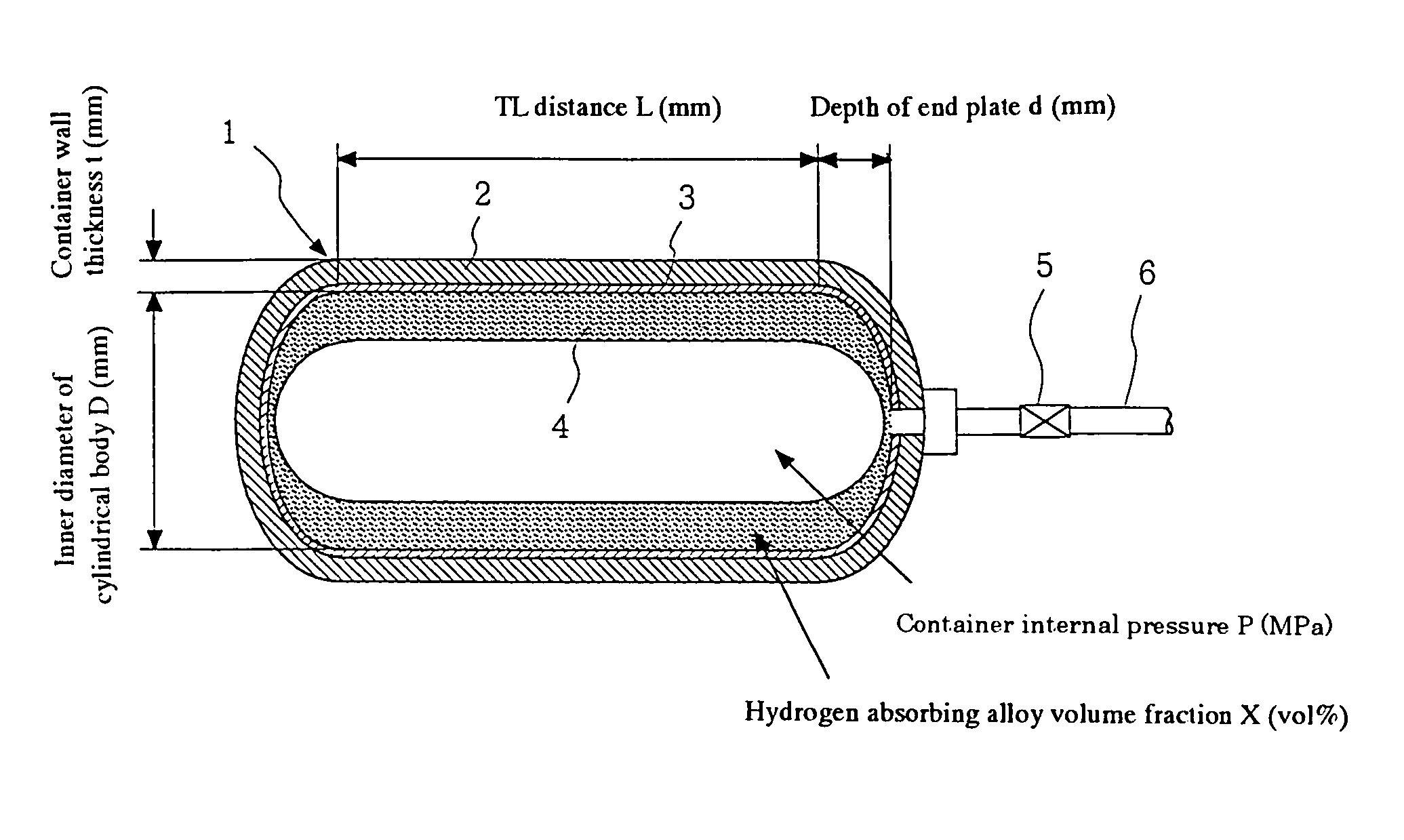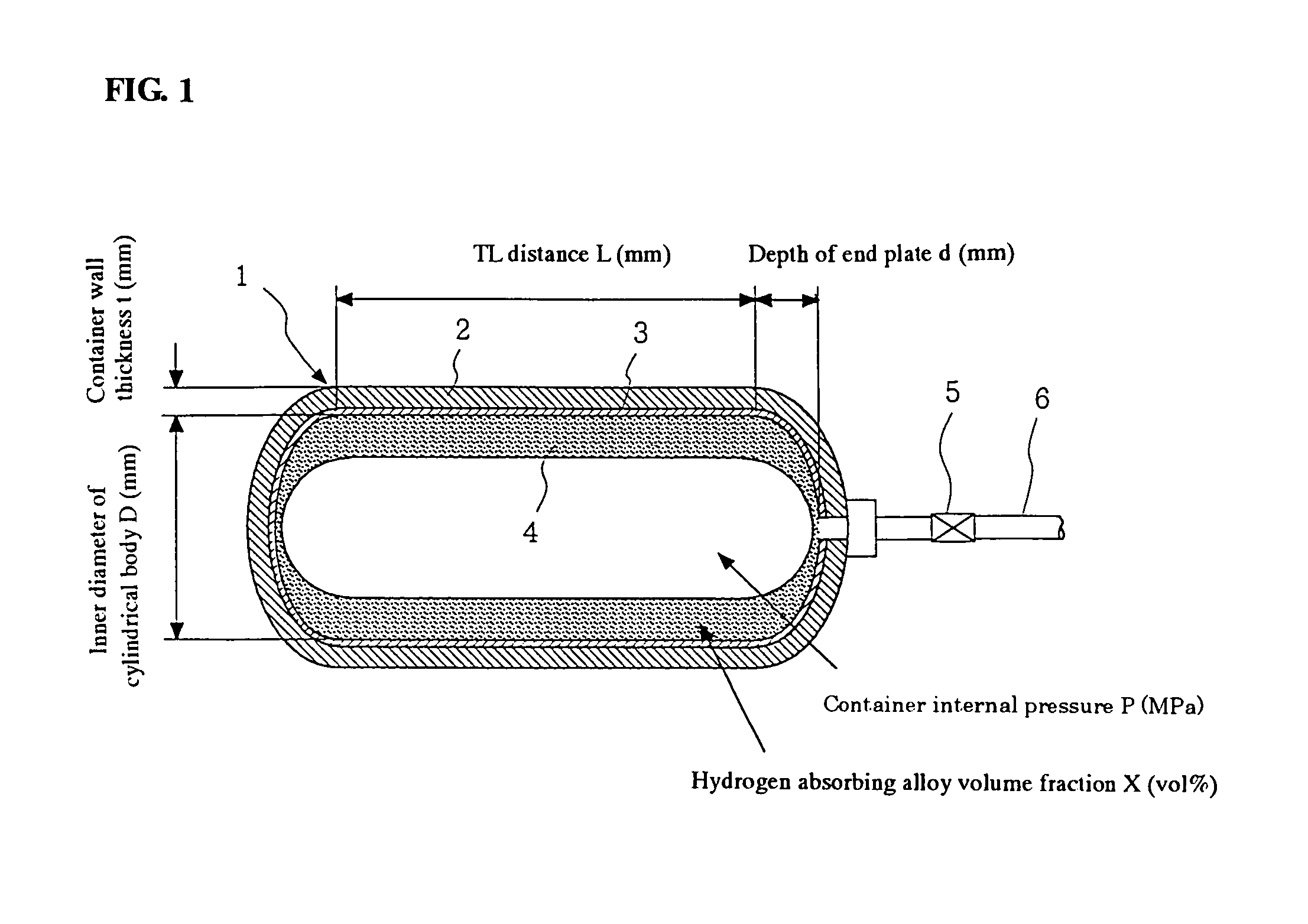Hybrid hydrogen storage container and method of storing hydrogen in container
a hydrogen storage container and hybrid technology, applied in the direction of rigid containers, transportation and packaging, mechanical equipment, etc., can solve the problems of not being able to obtain a container capable of storing 5 kg hydrogen, the container weight becomes remarkably heavy, and the container is not suitable for fuel cell powered vehicles or the like, so as to reduce the uneven distribution of powder
- Summary
- Abstract
- Description
- Claims
- Application Information
AI Technical Summary
Benefits of technology
Problems solved by technology
Method used
Image
Examples
Embodiment Construction
[0047]An embodiment of the present invention will now be described with reference to the drawing. FIG. 1 is a conceptual drawing showing, in cross section, an example of a hybrid-type hydrogen storage container of the present invention. In the drawing, the reference numeral 1 denotes a pressure container that is shown in a double-layer structure consisting of a reinforcing layer 2 and a liner layer 3. A pipe 6 provided with a valve 5 is attached to the pressure container 1. A hydrogen absorbing material portion (carrier+hydrogen absorbing material) 4 representing a hydrogen absorbing material held by a carrier is contained inside the pressure container 1 and is fixed so as not to be moved by vibration during transportation or the like. Hydrogen is charged into the inside of the pressure container 1 at a charging pressure of 30 MPa or higher.
[0048]The pressure container 1 naturally needs to have adequate strength and pressure resistance, and hence should be constructed with a special...
PUM
 Login to View More
Login to View More Abstract
Description
Claims
Application Information
 Login to View More
Login to View More - R&D
- Intellectual Property
- Life Sciences
- Materials
- Tech Scout
- Unparalleled Data Quality
- Higher Quality Content
- 60% Fewer Hallucinations
Browse by: Latest US Patents, China's latest patents, Technical Efficacy Thesaurus, Application Domain, Technology Topic, Popular Technical Reports.
© 2025 PatSnap. All rights reserved.Legal|Privacy policy|Modern Slavery Act Transparency Statement|Sitemap|About US| Contact US: help@patsnap.com


